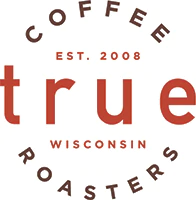Three years ago I had spent close to a week in Jaltenango, Chiapas, a small farming community in the Sierra Madre Mountains located in the South of Mexico, to visit coops and source a delicious coffee. At that time la roya(rust, a fungus that attacks & kills the leaves depriving the plant of energy needed from the sun to sustain itself) was in its second year and farmers were struggling to deal with up to 40% loss of their crops. To combat this they were starting to look for rust resistant varietals that could produce a good tasting cup of coffee. The past couple of years have been very rough for farmers in this area so I was very curious to see what has changed since I was last there.
So… after 14 hours of travel with layovers in Atlanta, Mexico City we landed in Tuxtla Gutierrez only to be faced by a 3 hour drive to Jaltenango(the things we do for a good cuppa joe). One of the first things I learned on arriving is that the locals don’t observe daylight saving’s time. So there’s ‘government time’ & ‘local time.’ I have to admit that after being there for three days I was starting to admire the locals’ decision to throw the daylight savings convention out the window.
In any case the first coop we visited was CESMACH with 663 producers it’s the largest of the coops that we visited. And news is good. Production and quality are both up. They’ve been partnering with professors from a university in Oaxaca to help identify local varietals and to do extensive soil analysis. On the first there’s a variety they’re calling ‘Rancho Bonito’ and is being heavily produced in the nurseries for the farmers. It’s said to be resistant to rust and cups similar to Bourbon which has a desirable cup quality. On the latter it’s been found their soil is quite acidic so the coffee plants have difficulty absorbing nutrients. So over 760 tons of calcium carbonate were purchased and distributed to farmers to be used as fertilizer. Healthier plants are better able to resist roya. While there’s a lot of work that still needs to be done(rust is still a very significant issue that farmers face) on this end there is something to show for all of the work that’s been done.
The next day we visited with Finca El Triunfo the second of the three coops that fall under the CESMACH umbrella. Finca El Triunfo has ~550 producers. Here, again, we found things to be much the same as with CESMACH. Both quality and quantities are up and they’re very excited about things to come.
On the last day we went over to visit with Comon Yaj Noptic. It’s an indigenous dialect and stands for ‘let us all think about it.’ This is the smallest of the three coops with 160 producers. As an organization they’re engaged in projects to better the community they live in, the environment and the farms/coffee itself. While they aren’t actively trying to increase the number of members it shows they are putting money back into their infrastructure, environment & community. I think that this is a group worth of keeping an eye on for many reasons. Good things will come from here.
The last item on our itinerary was to cup farmer lots that were put together by all three coops. Altogether there were about 40 lots that were put together and as anticipated there were indeed some very tasty coffees on the table. I’m looking forward to sharing these with you.

